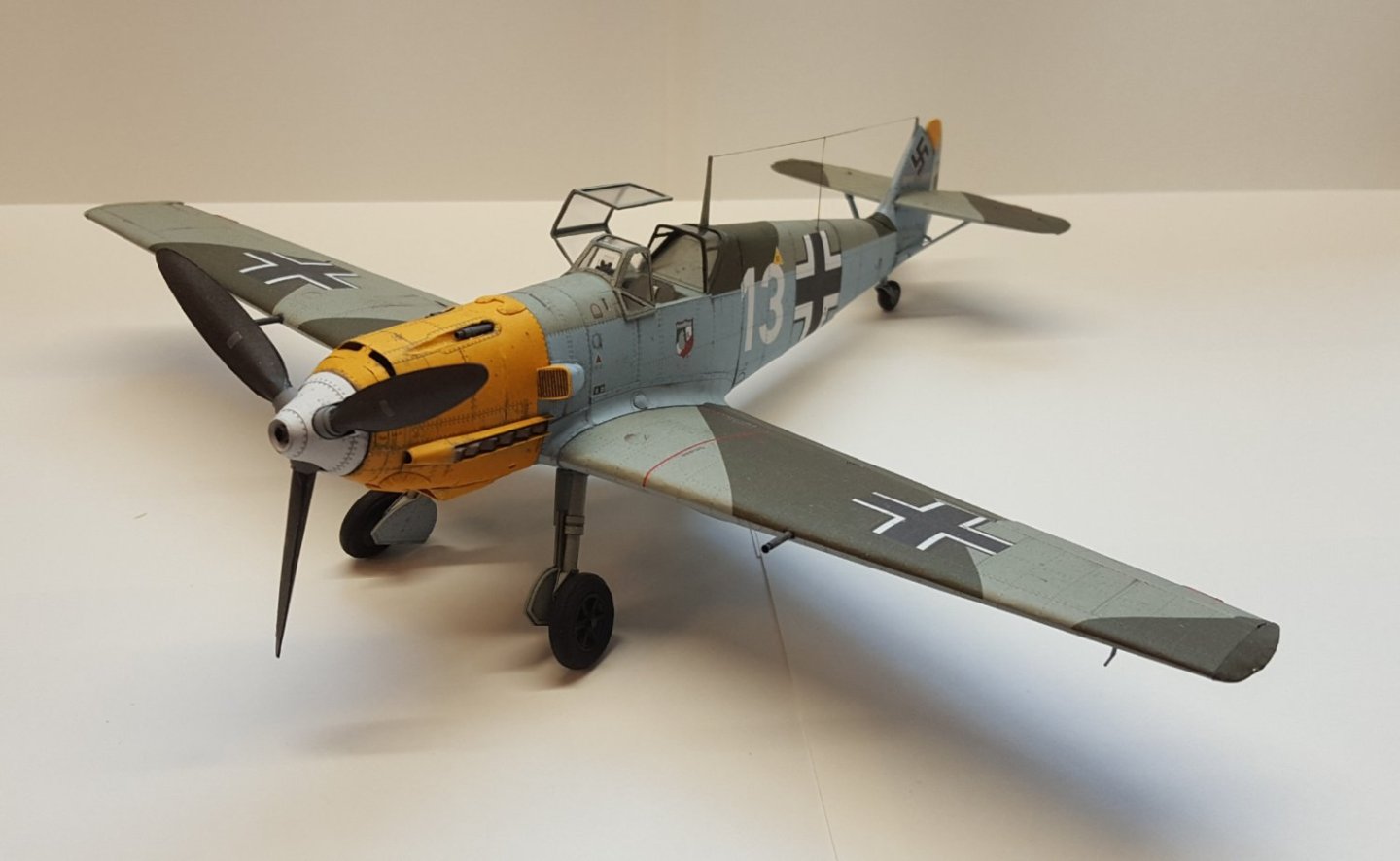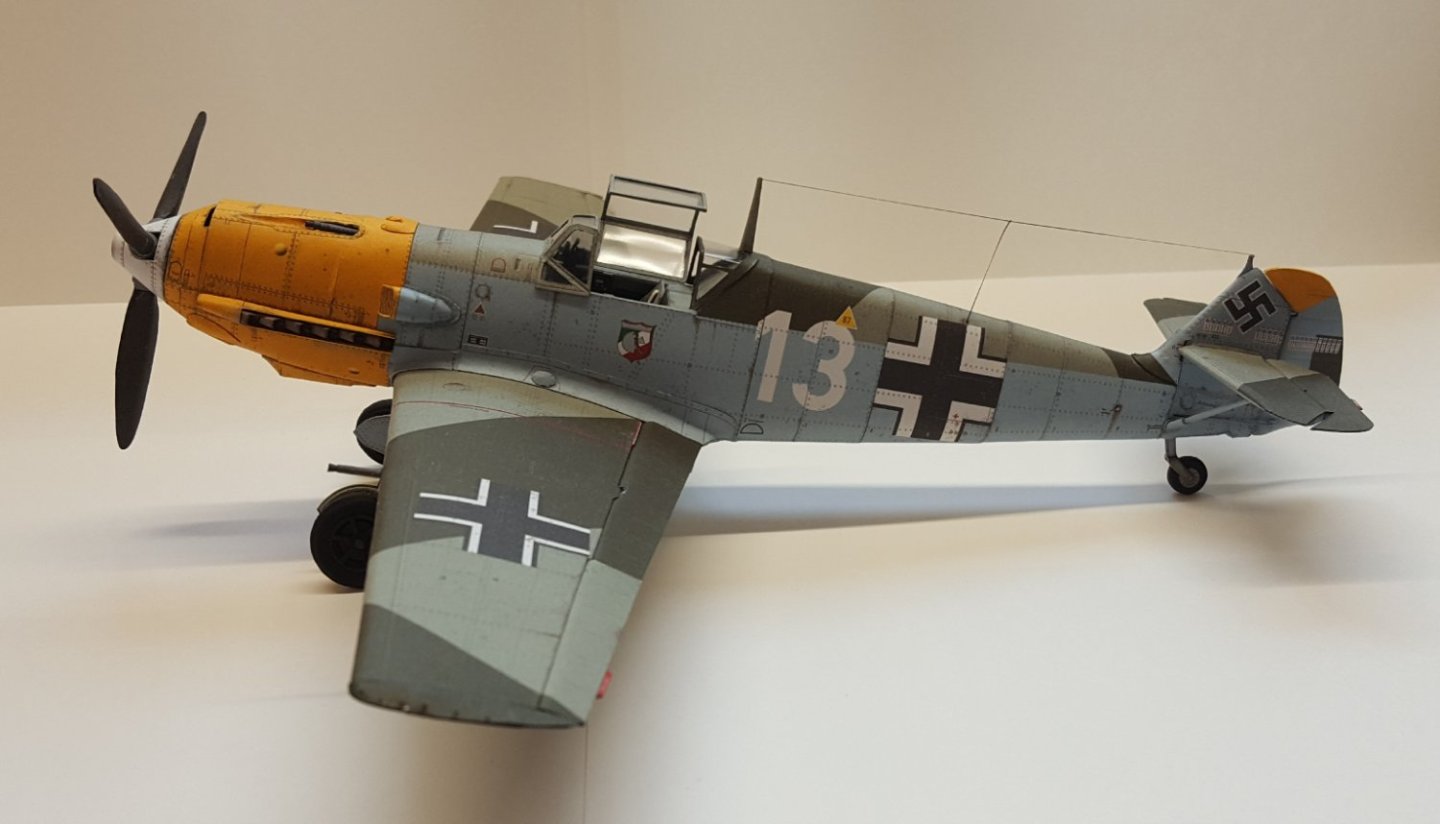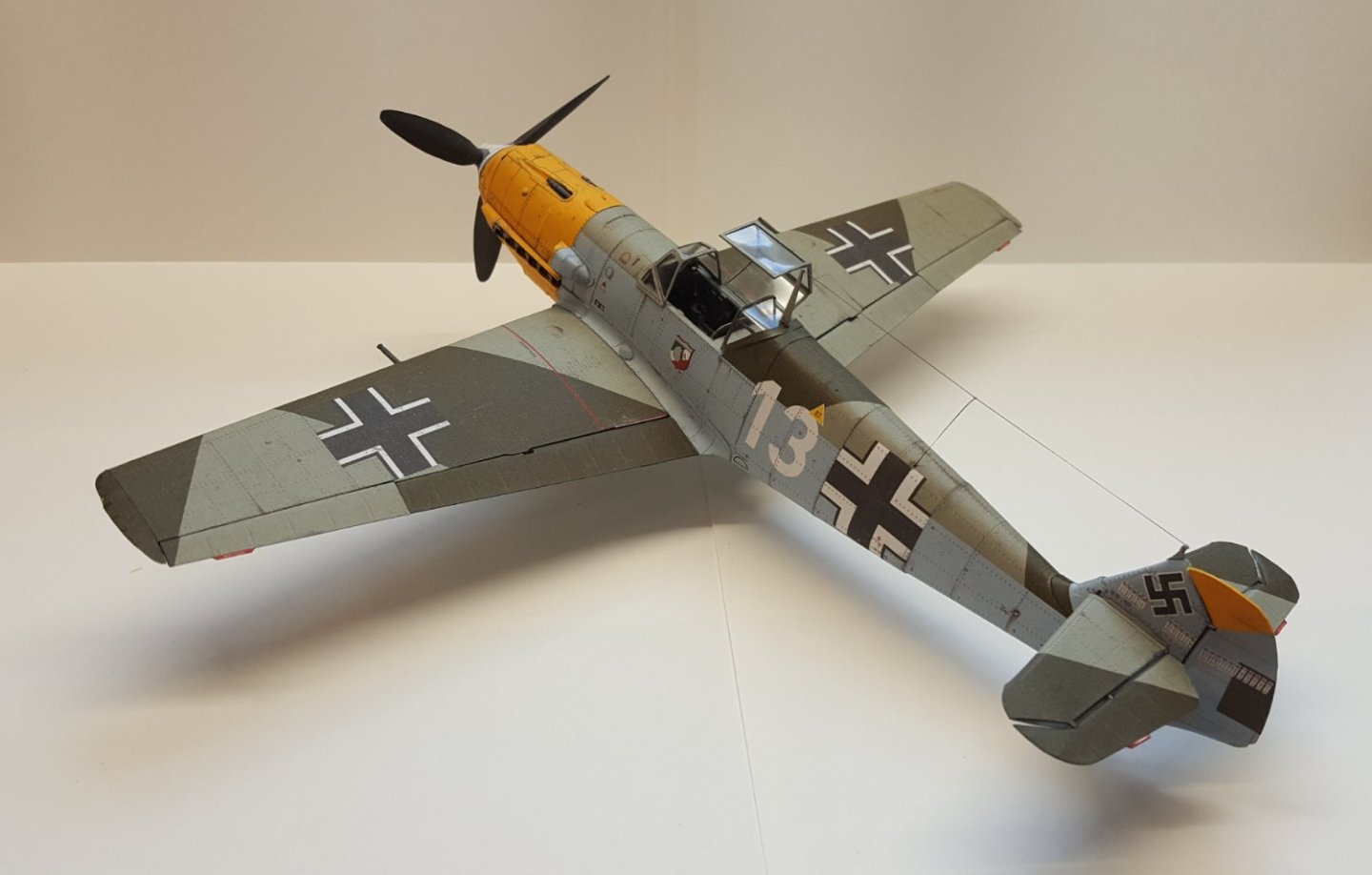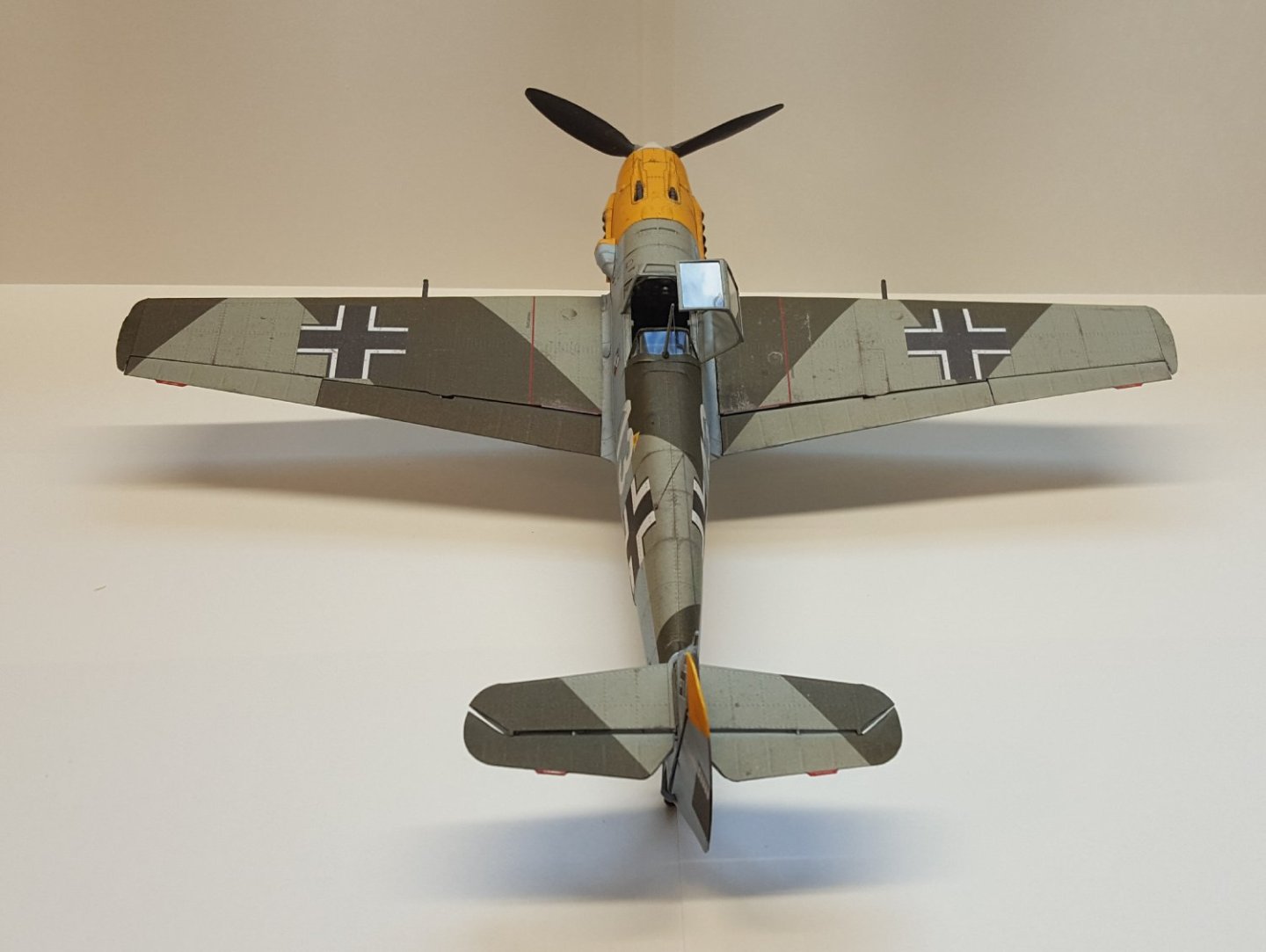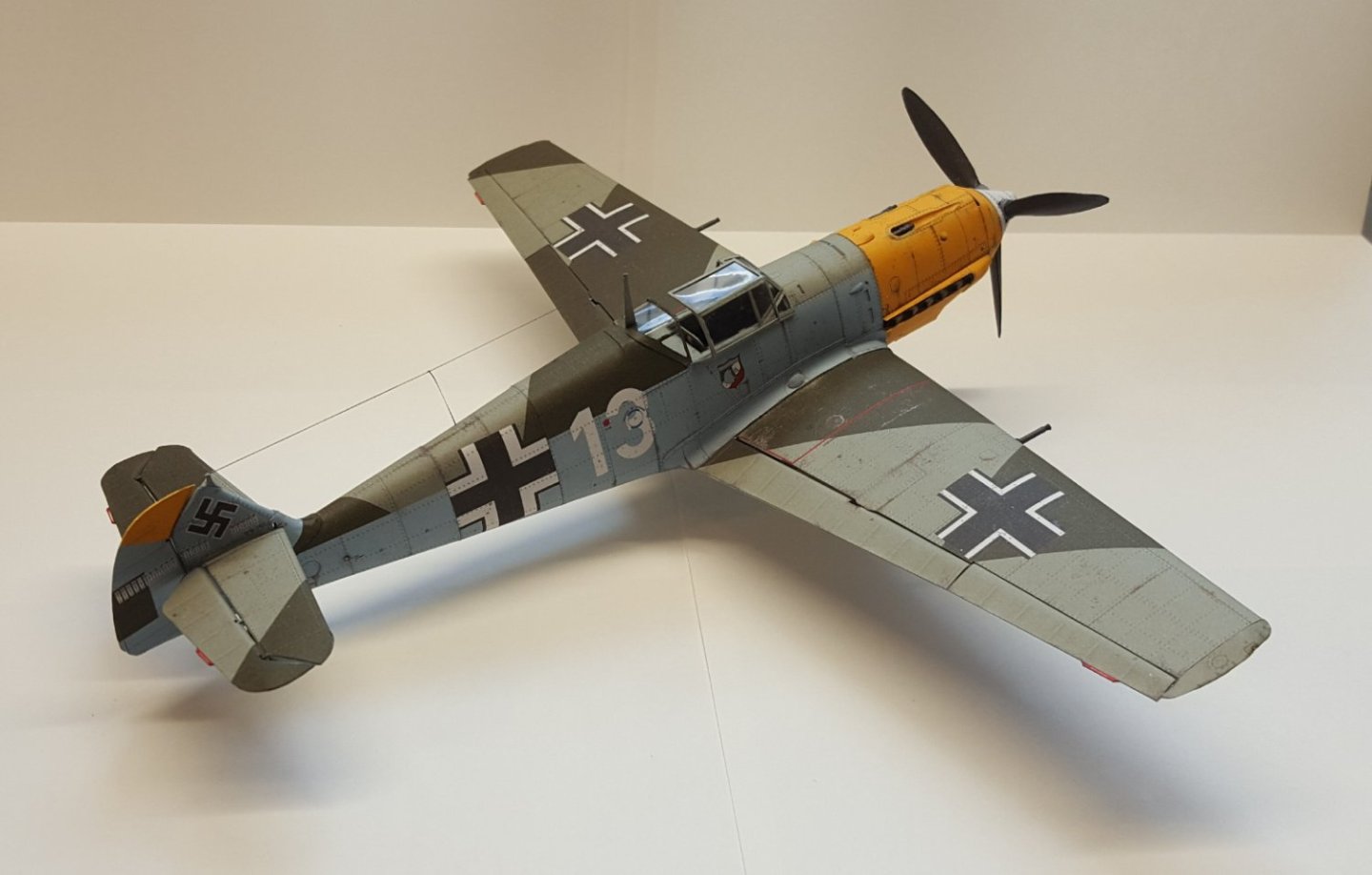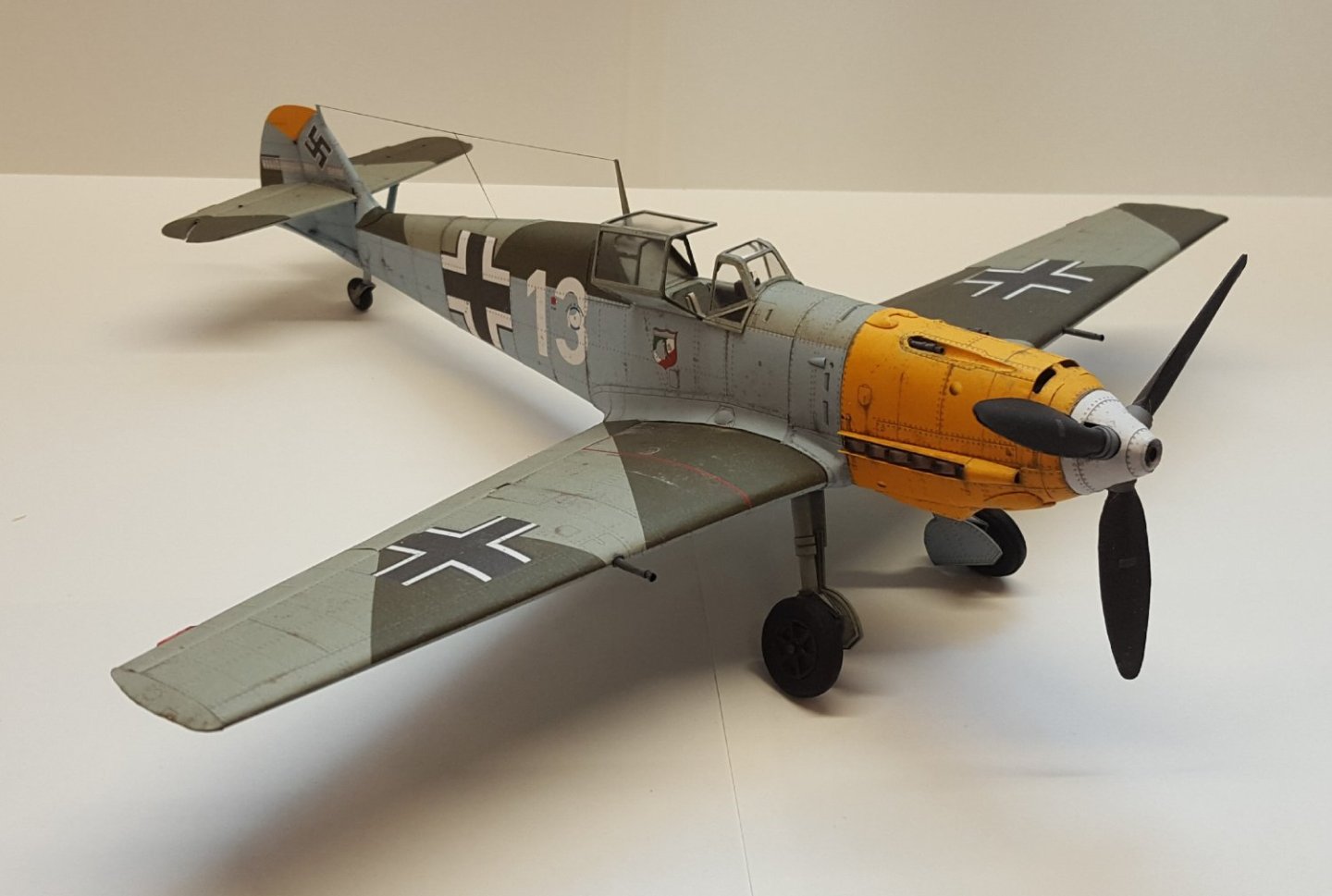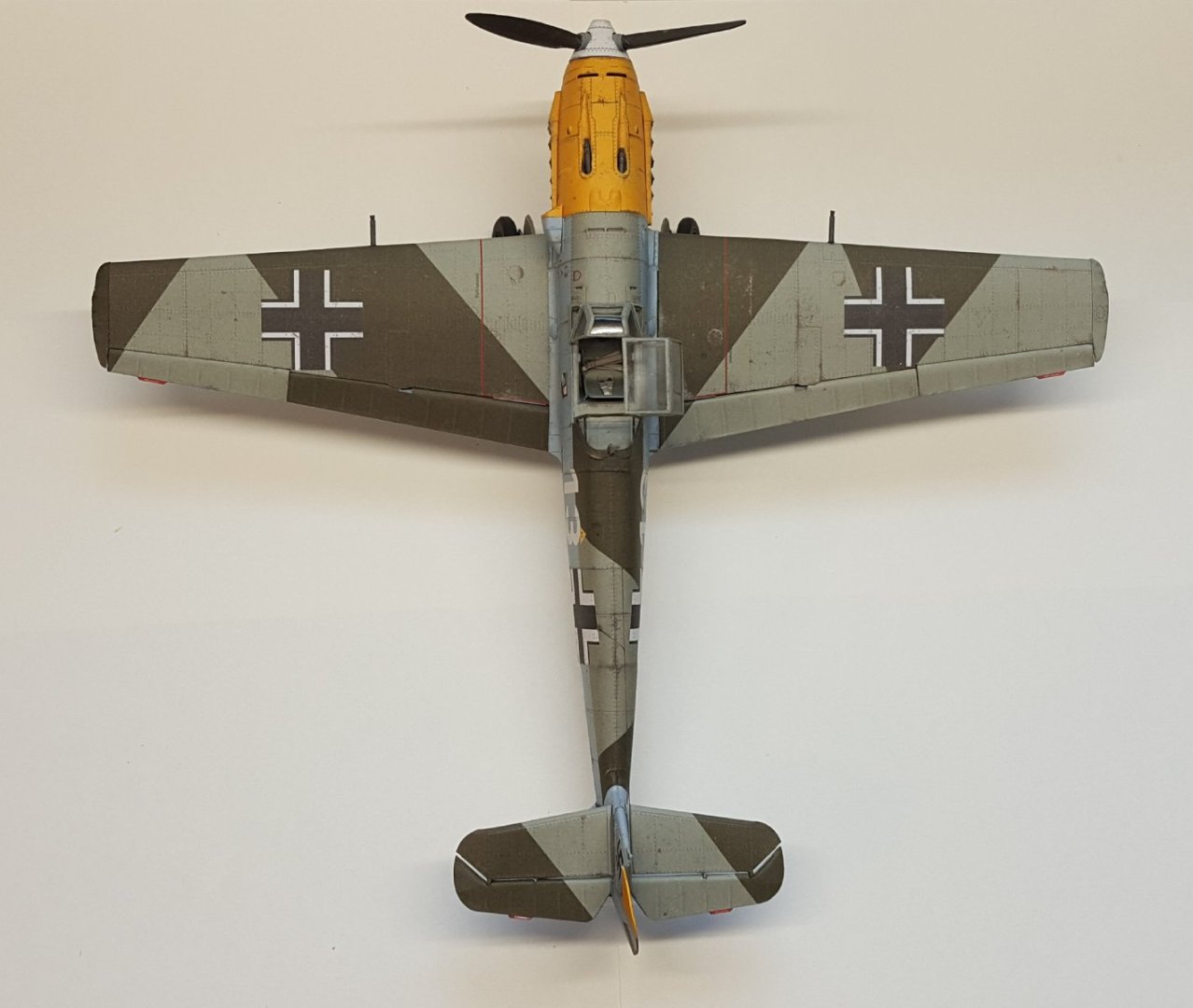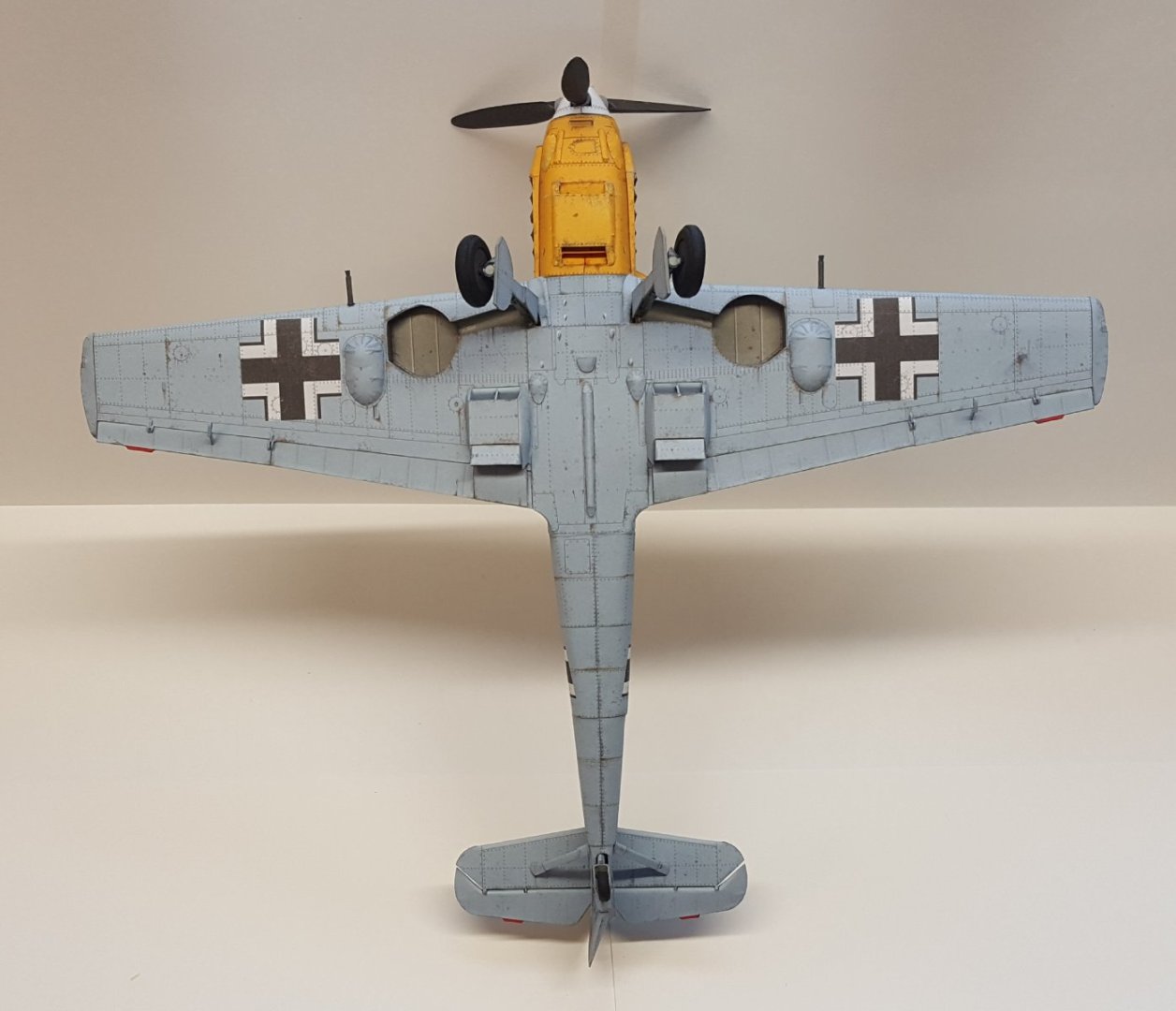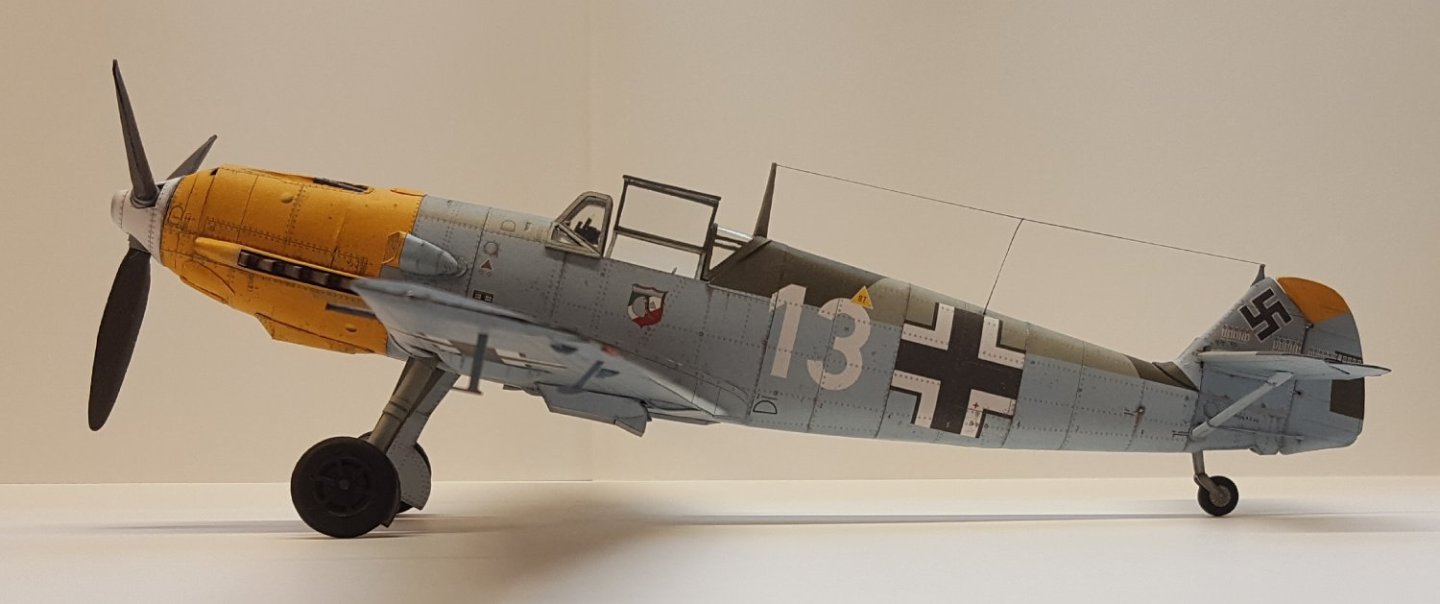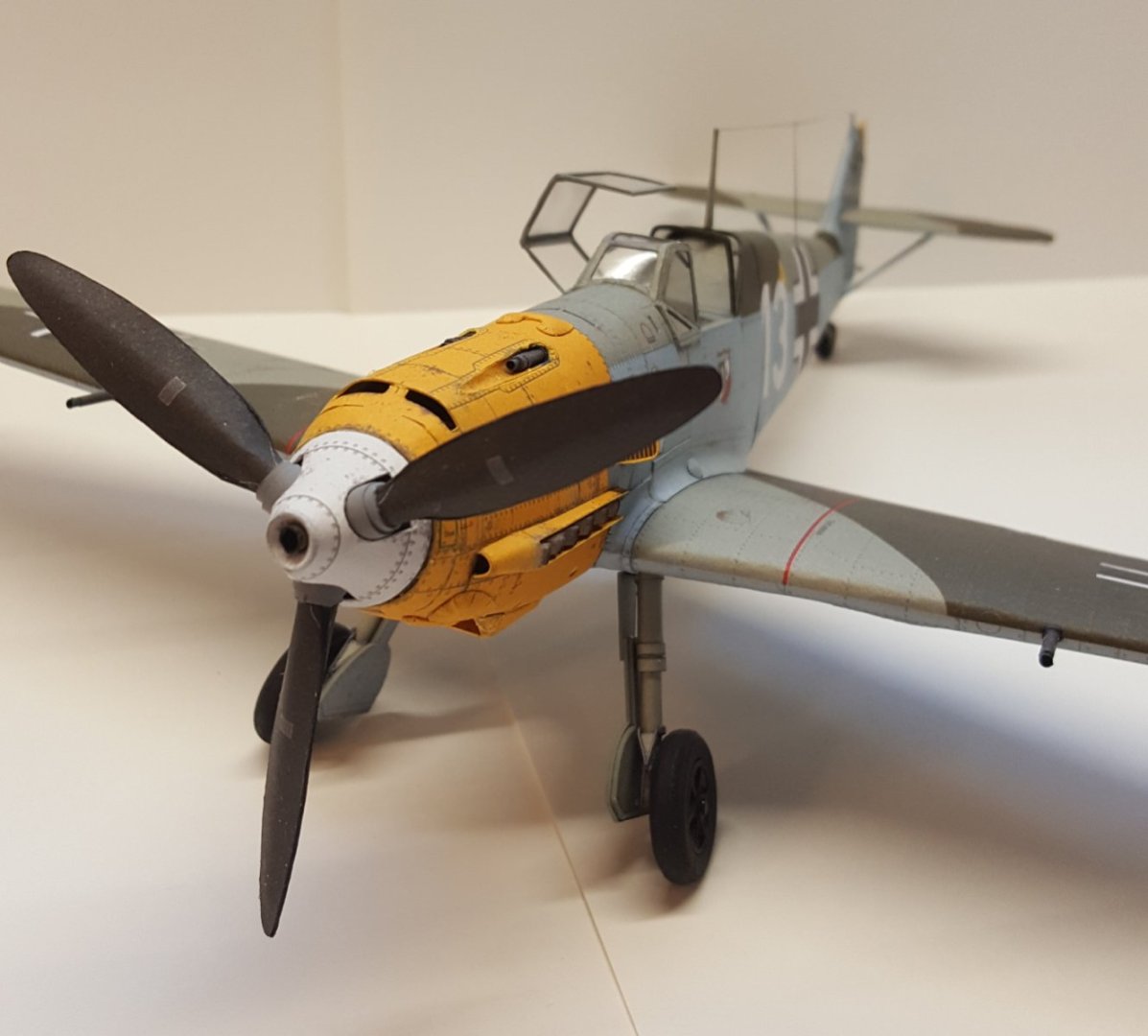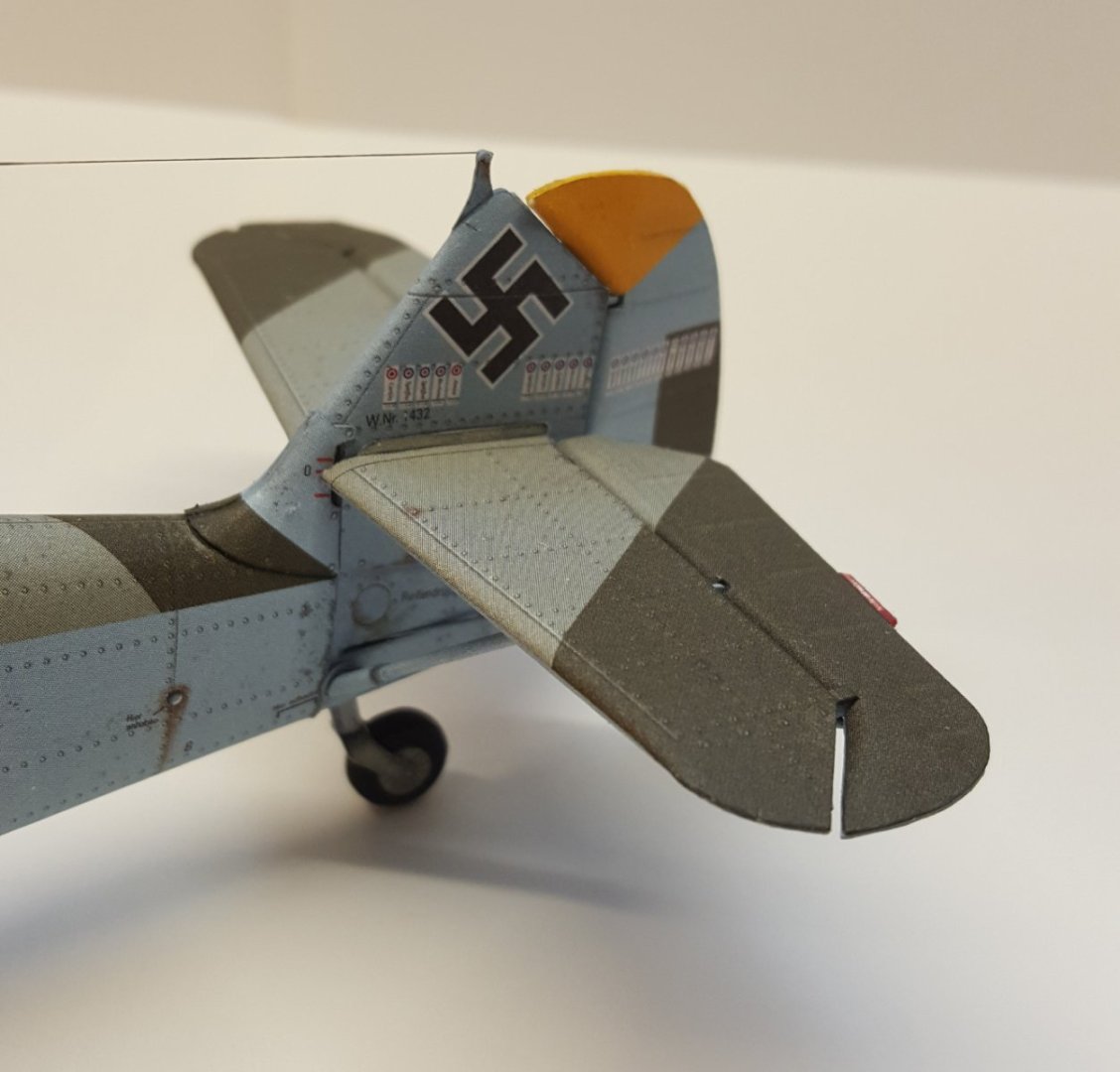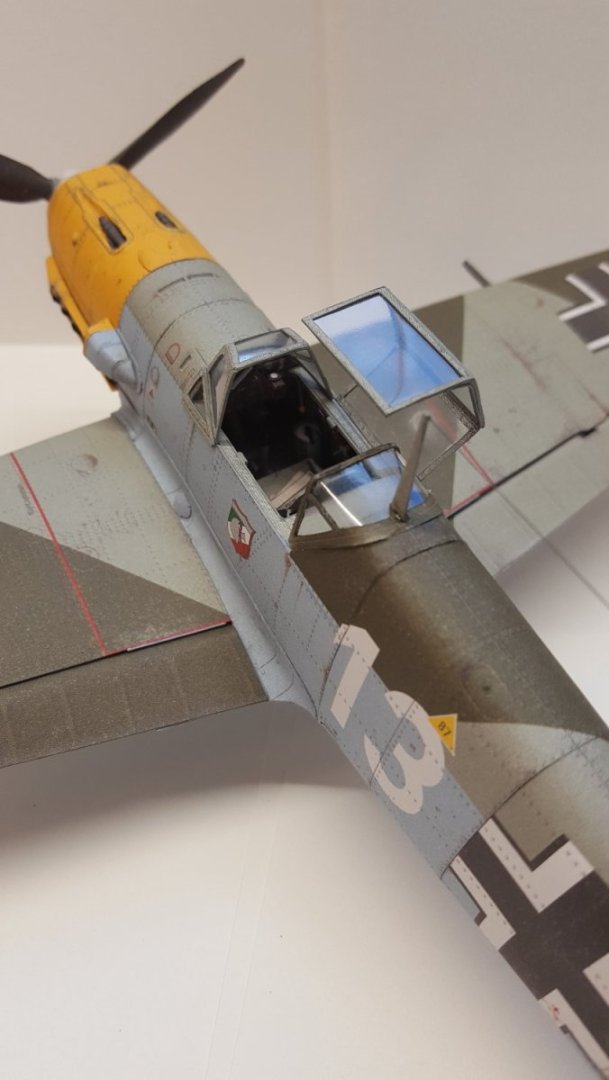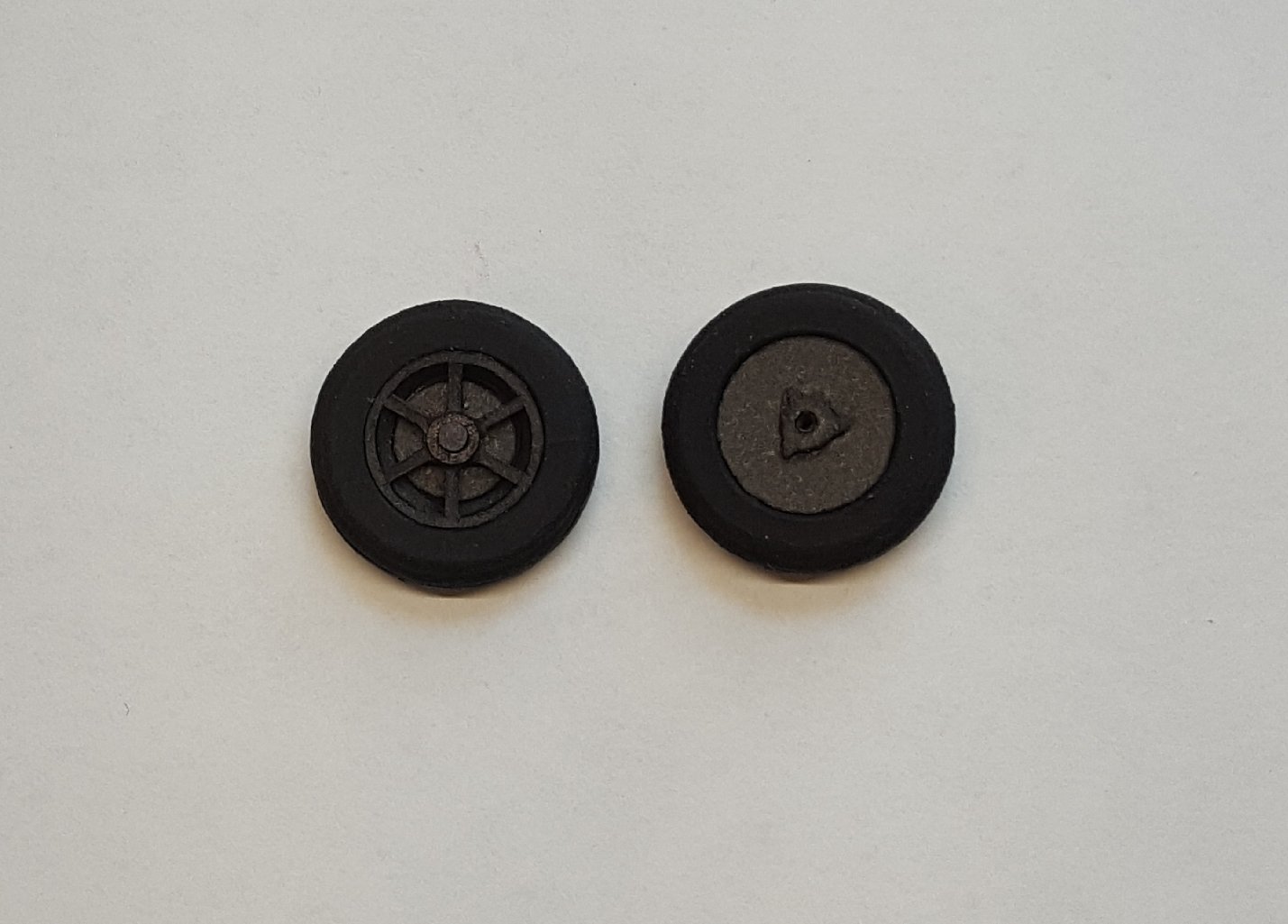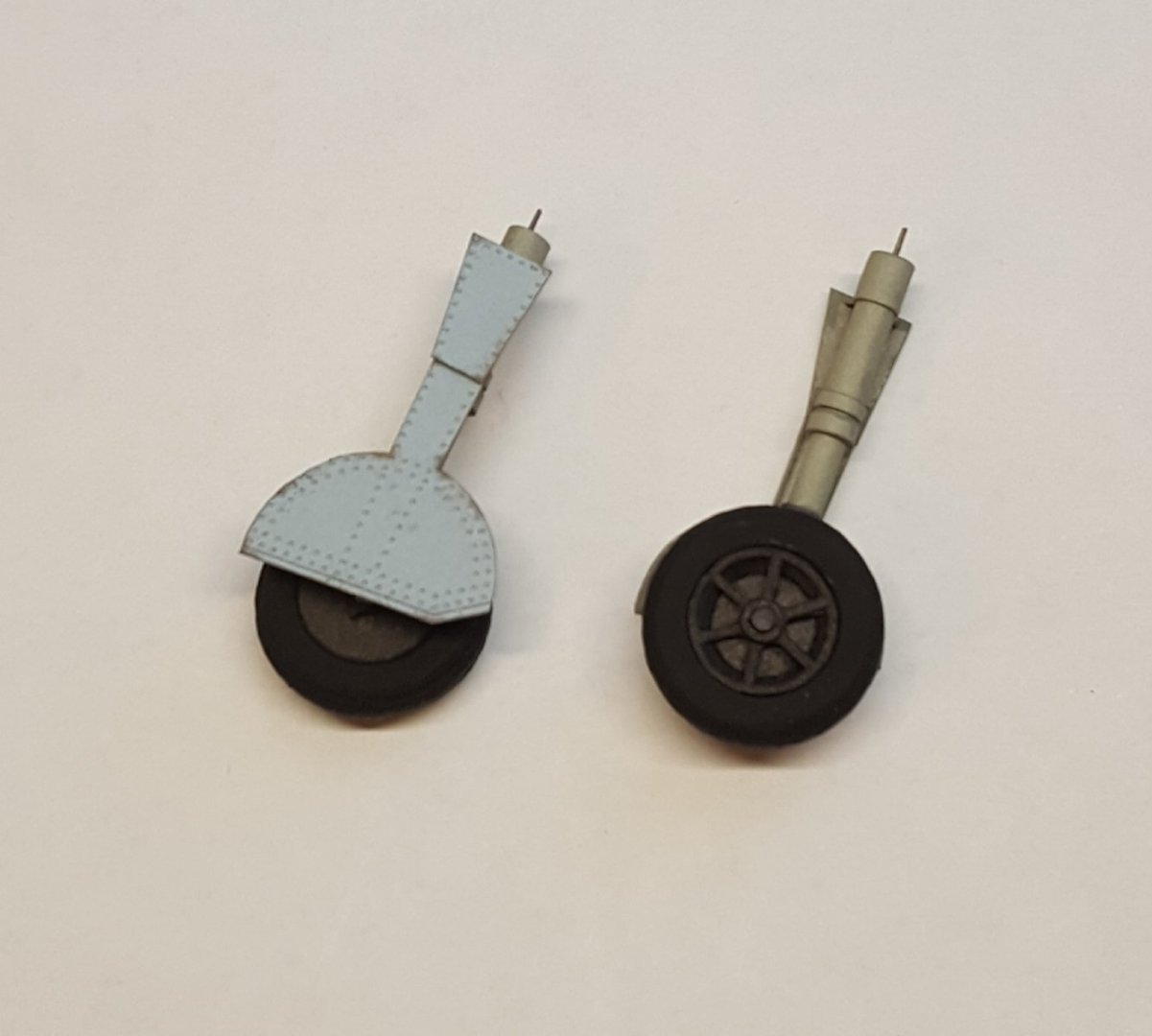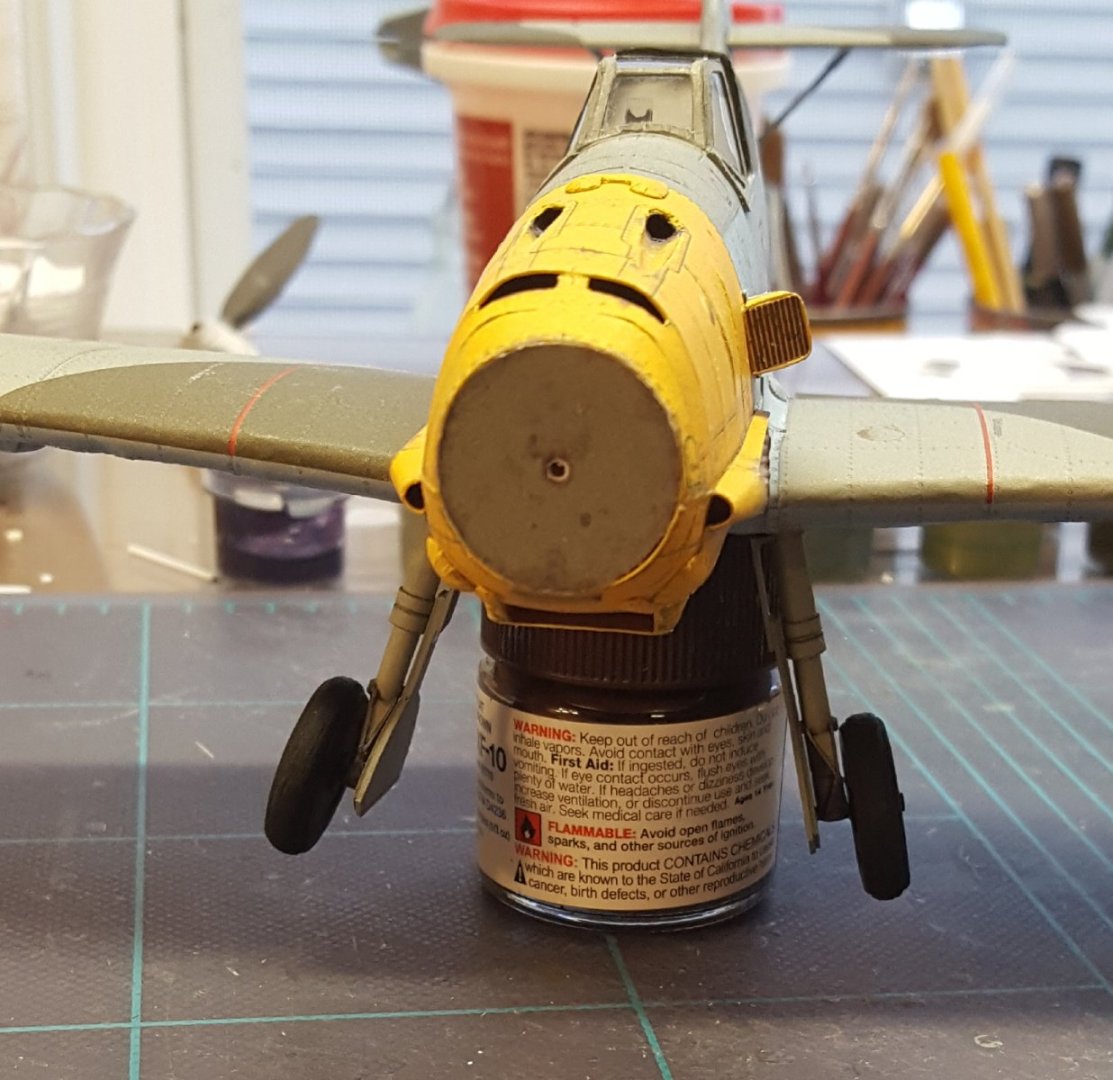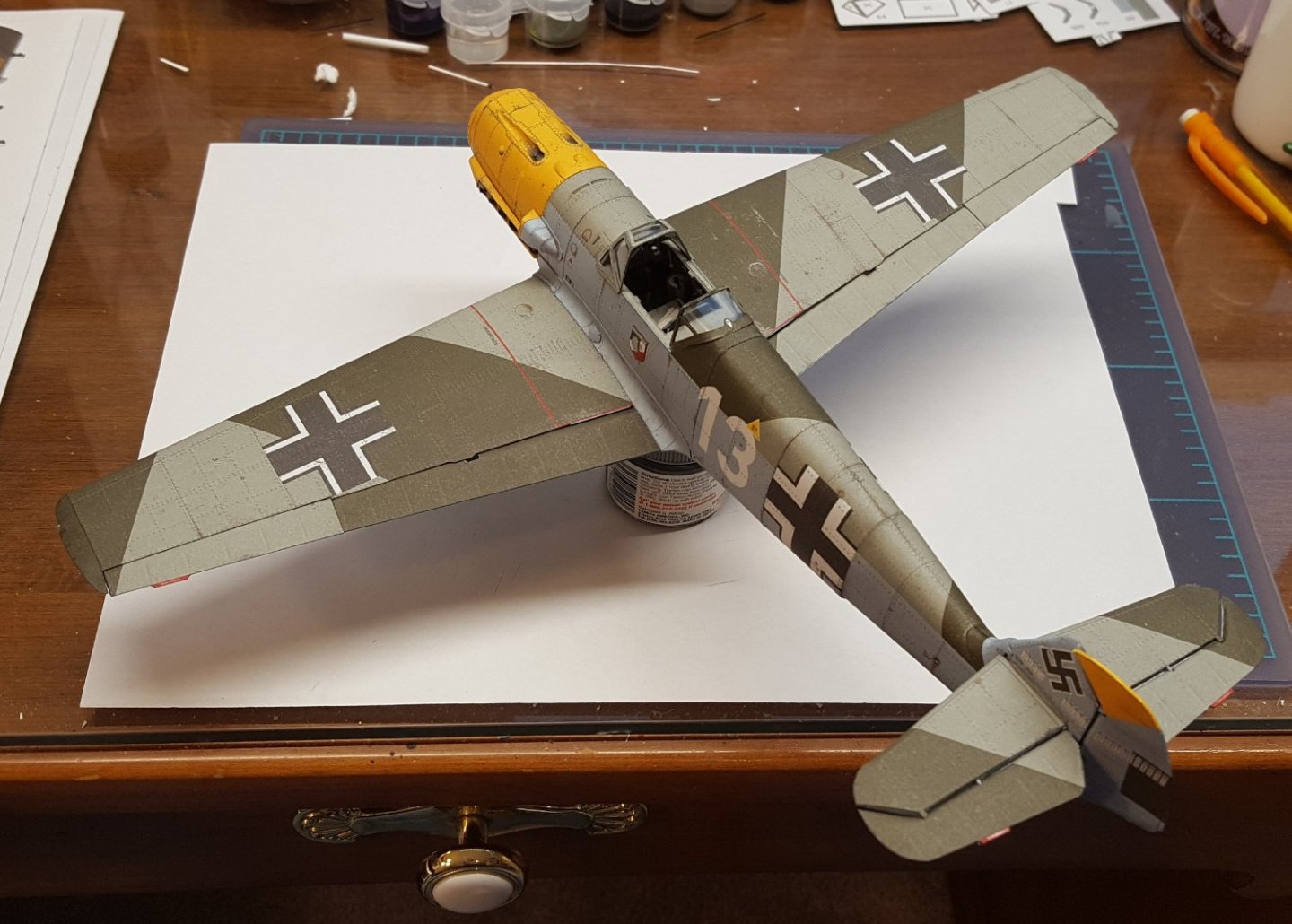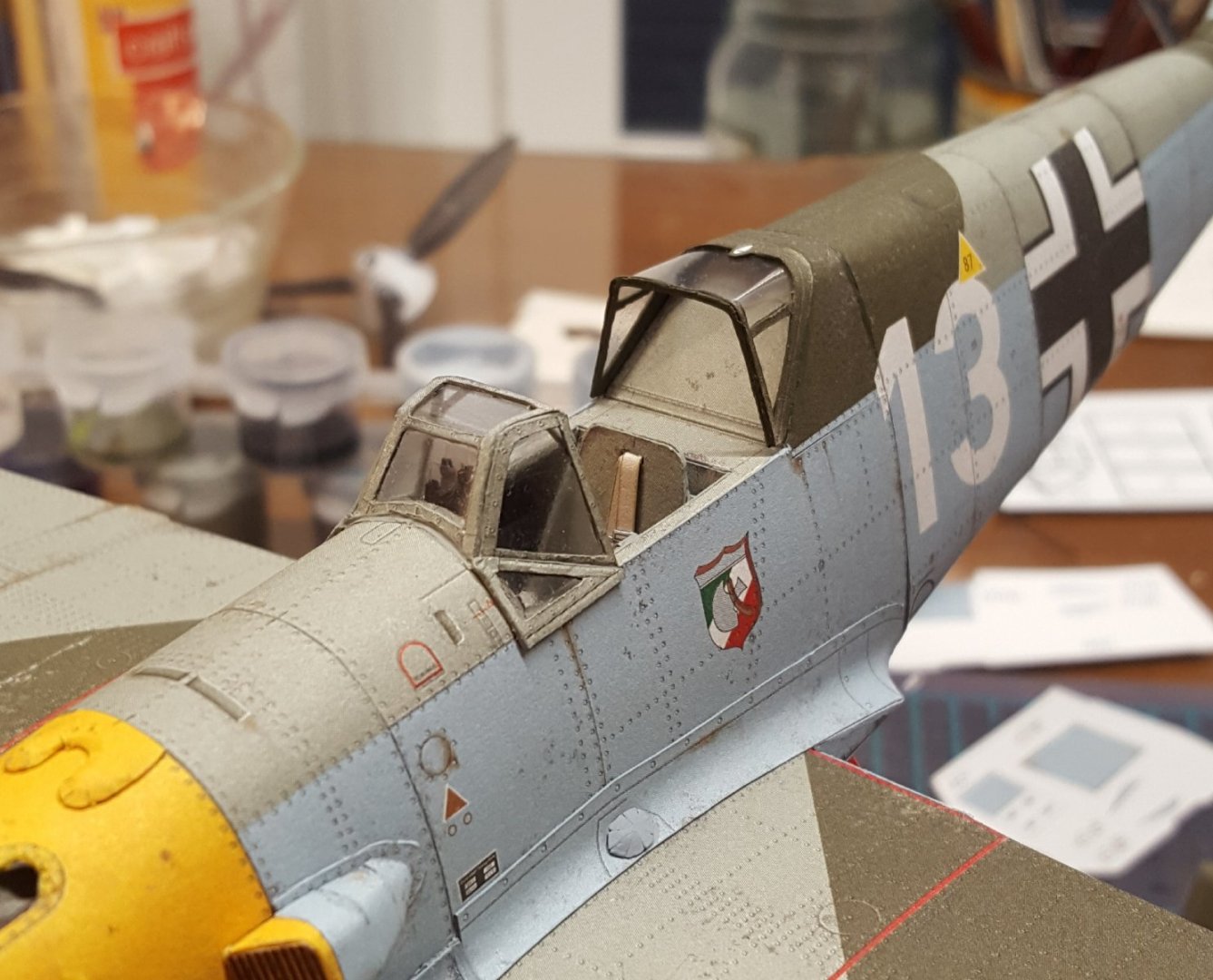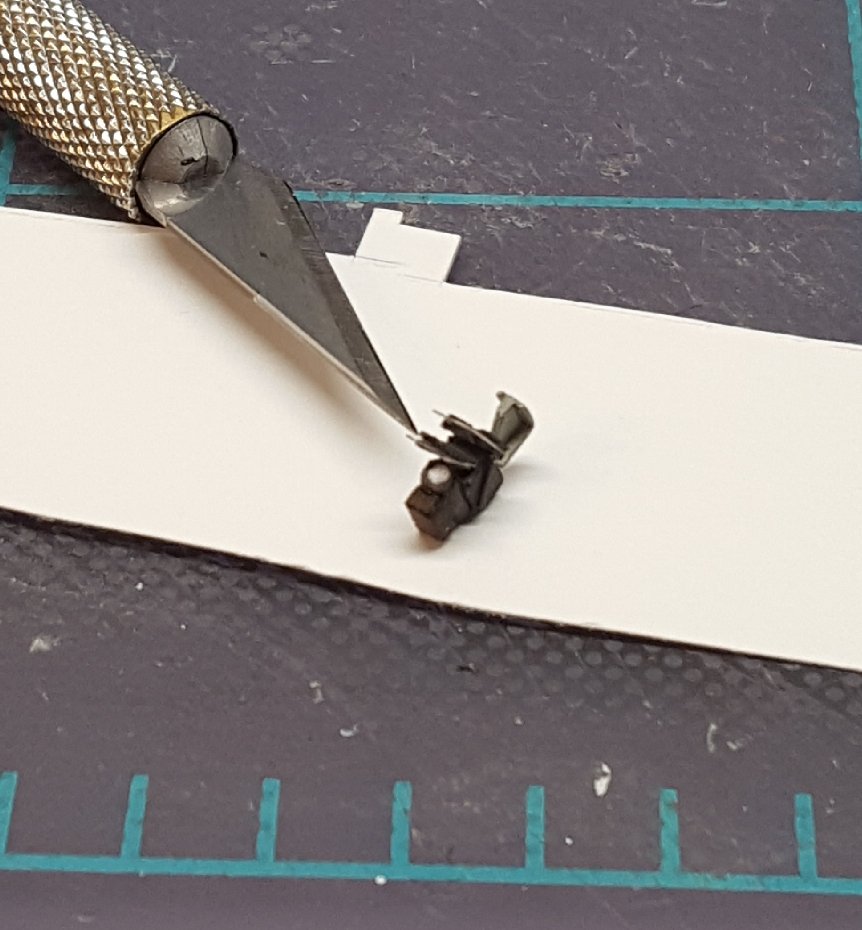-
Posts
10,520 -
Joined
-
Last visited
Content Type
Profiles
Forums
Gallery
Events
Everything posted by ccoyle
-

On Hold - Nakajima Type KO 3 by CDW - Answer - 1:33 Scale - CARD
ccoyle replied to CDW's topic in Non-ship/categorised builds
Good luck, Craig! I'll be following along with interest. -
More like a "journeyman class," but I appreciate the accolade! I think one of the biggest take-aways from this build for me personally is that I now feel less intimidated by Halinski kits, having completed three of them. I have to qualify that statement with the observation that Halinski kits tended to get even more complex after the 2007 publication date of this kit. Some of the newer ones that I have in my stash (e.g. Fw-190D-9, Ki-61) make this one look rather tame. And Card Army, whose chief artist, Marcin Dworzecki, did the artwork on many of the Halinski kits, has ratcheted up the detail on card kits to an even higher degree, if you can believe it. When I look at the Card Army kits and coolly assess my skills against what would be required to build one of them, I have to realistically conclude that they are really only suitable for a very tiny minority of modelers.
-
The kits come with templates for cutting the glazing from the modeler's choice of material. In this instance, I used a molded after-market canopy. Such canopies are usually kit-specific, meaning that a canopy for one kit may not fit a kit from another publisher, even if it's the same subject. However, in my experience, even the fit with the intended kit (i.e. a Halinski canopy with a Halinski kit) can be problematic and depends greatly on the skill of the builder in getting the cockpit dimensions just right; get the dimensions off a millimeter here and there and all sorts of fit trouble follows. I have had to 'fudge' the fits on more than one molded canopy.
-

MRAP ATV by CDW - FINISHED - Rye Field - 1:35 Scale
ccoyle replied to CDW's topic in Non-ship/categorised builds
Very interesting piece -- well done! -
I think that it's safe to say that a model of a U-boot or other submarine, having a relative paucity of structure compared to a surface combatant, really depends on the painting and weathering skills of a modeler in order to bring it to life. This you have done in spades, Greg!
-
Yep, beneath the grating is definitely not correct, as the beam would largely block the open grate and thus defeat the purpose of placing a grate there in the first place.
- 82 replies
-
- Fly
- Victory Models
-
(and 2 more)
Tagged with:
-
The Big Reveal! So, one day shy of two months from the beginning of construction on this project (though it felt like longer), the Bf-109E-4 is complete. The final bits of construction consisted of small parts that needed to wait until the final stage in order to avoid getting knocked off repeatedly: tail wheel, antenna masts, gun barrels, aileron counterweights, pitot tube, and canopy. All in all, a challenging project without too many issues, though I did find some post facto construction errors and did wind up with a few tiny "mystery parts" left over. Enjoy the pictures!
-
So, I recently decided to suffer the injustice of high postage costs from Poland and ordered a batch of kits. The VERY NEXT DAY I learned that Kartonowa Kolekcja, my favorite publisher, just published a new kit. It's a Nieuport 16c.1, complete with Le Prieur rockets. The Nieuport 16 was an updated Nieuport 11, so this kit amounts to a repaint and slight modification of the older release. I was hoping that the next kit might be a SPAD, Albatros, Swordfish, or Fokker DVII repaint, but no joy. Still, this kit is a nice addition to the KK catalog
-
Welcome, Zac! I actually think a well-motivated beginner might be able to pull off the Endurance. Having no guns and being square-rigged on only one mast, it lacks some of the elements that can make a first build particularly difficult. The photo-based instructions should also be very helpful. Be sure to create a build log when you get started, and you should be able to get lots of advice along the way. Cheers!
-
Great! I'd be interested to see pictures of that kit when it arrives. The only photos I've seen of the printed parts were taken it what appeared to be poor lighting. I went ahead and pulled the trigger on the two Answer kits I spoke of earlier, the Nimrod and the Nieuport 28 -- they're both incredibly nice-looking biplanes -- I couldn't resist (don't tell the missus)! I also added a Stearman PT-17 Kaydet to the order and laser-cut frames for all three kits, plus resin wheels for the Nimrod and some frames for a Fiat G.50 Freccia I have in the stash (the desert camo on that kit matches the livery of my CR.42 Falco).
-
I'm sorry to see that -- your work looks great to that point. I hope it finds a good home!
-
The dollar is trading high versus the Polish zloty as well, which makes it a great time to order card models, but the shipping is where you really take it in the shorts. 😬
-
Very nice -- congratulations!
- 104 replies
-
- Bluejacket Shipcrafters
- smuggler
-
(and 1 more)
Tagged with:
-
Hello all you friends who model other things besides ships! You may have noticed that a number of topics in this section have been tagged with the word 'done'. Yes, that tag means exactly what you think it means -- it indicates a project that is finished. If you wish to see a list of all the finished projects in this sub-forum, simply click one of the 'done' tags and they will come up in a list (all 316 of them as of this writing). A reminder: Why have we used the word 'done' in this section and not 'finished' like everywhere else? Because MSW is first of all a ship modeling forum, and we want people who click a 'finished' tag, hoping to see only ship models, to in fact see only ship models. We will reserve 'done' for non-categorized builds, thus keeping the two groups -- ships versus everything else -- separate. You can add the tag 'done' to your completed projects or have me tag them for you. As always, I will be watching out for your 'done' projects, but some folks are less effective than others about alerting members to the fact that their done projects are indeed done. Another reminder: Other than indicating projects as 'done', we DO NOT use any other tags in this sub-forum! I had to expunge a few recently. Again, this is so that ship modelers don't get non-ship results in their searches. So, got that? Clicking a 'finished' tag will return ONLY finished ship models. Clicking a 'done' tag will return ONLY finished non-ship projects. Thanks and enjoy!
-
Hi, Steven. I'm the guy who wrote the "Cautionary Tale" post. I have seen beginners take on very difficult models as first projects and complete them, but one of the things that I pointed out in my article is that such accomplishments are quite rare. Based on my many years of moderating this forum, I don't think that it's a stretch to say that about 90% of beginners who attempt large men-of-war like Victory eventually give up on the attempt. To back up my assertion, I invite you to check out this link, which lists all of the build logs for HMS Victory on our site that include the words "first build" in their titles. As you will see, the one thing that all of those build logs have in common is that not a single one of them is tagged as being finished, even if a few of them did reach advanced stages of construction. So, the cautionary is exactly that -- a cautionary tale. No one is saying that you can't attempt Victory on the first go at this hobby, but if you were to complete it, it would be an extraordinary feat. Kind regards,
About us
Modelshipworld - Advancing Ship Modeling through Research
SSL Secured
Your security is important for us so this Website is SSL-Secured
NRG Mailing Address
Nautical Research Guild
237 South Lincoln Street
Westmont IL, 60559-1917
Model Ship World ® and the MSW logo are Registered Trademarks, and belong to the Nautical Research Guild (United States Patent and Trademark Office: No. 6,929,264 & No. 6,929,274, registered Dec. 20, 2022)
Helpful Links
About the NRG
If you enjoy building ship models that are historically accurate as well as beautiful, then The Nautical Research Guild (NRG) is just right for you.
The Guild is a non-profit educational organization whose mission is to “Advance Ship Modeling Through Research”. We provide support to our members in their efforts to raise the quality of their model ships.
The Nautical Research Guild has published our world-renowned quarterly magazine, The Nautical Research Journal, since 1955. The pages of the Journal are full of articles by accomplished ship modelers who show you how they create those exquisite details on their models, and by maritime historians who show you the correct details to build. The Journal is available in both print and digital editions. Go to the NRG web site (www.thenrg.org) to download a complimentary digital copy of the Journal. The NRG also publishes plan sets, books and compilations of back issues of the Journal and the former Ships in Scale and Model Ship Builder magazines.





